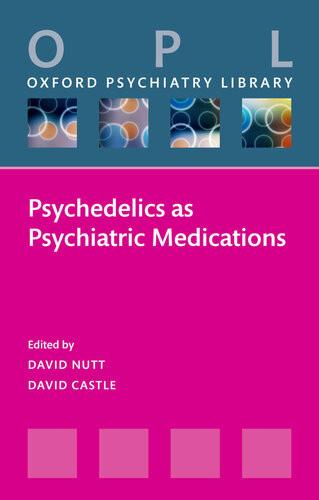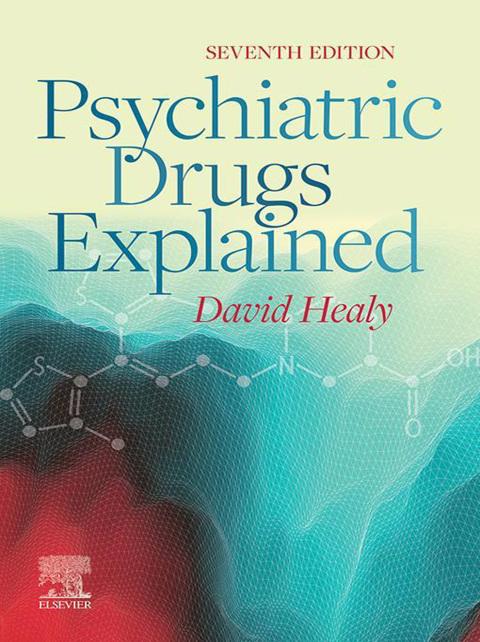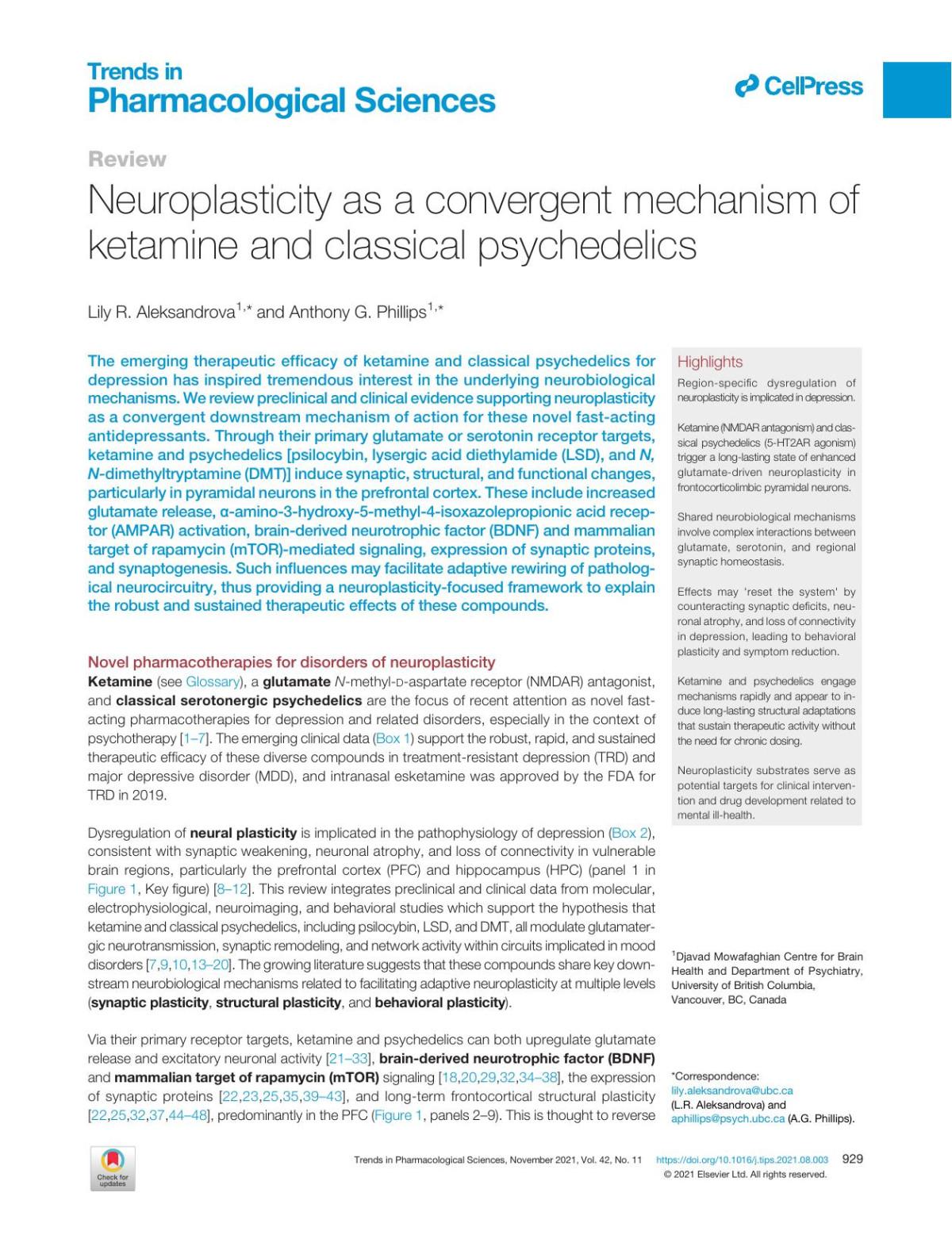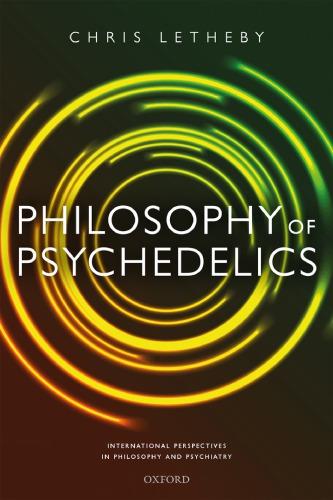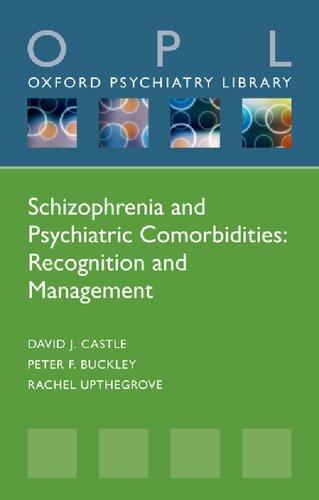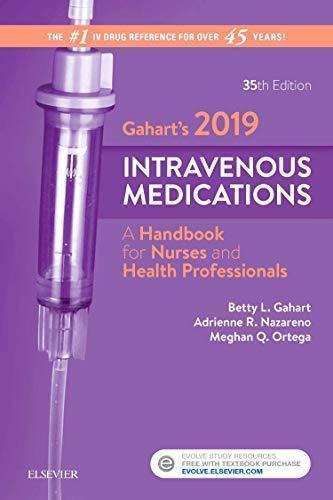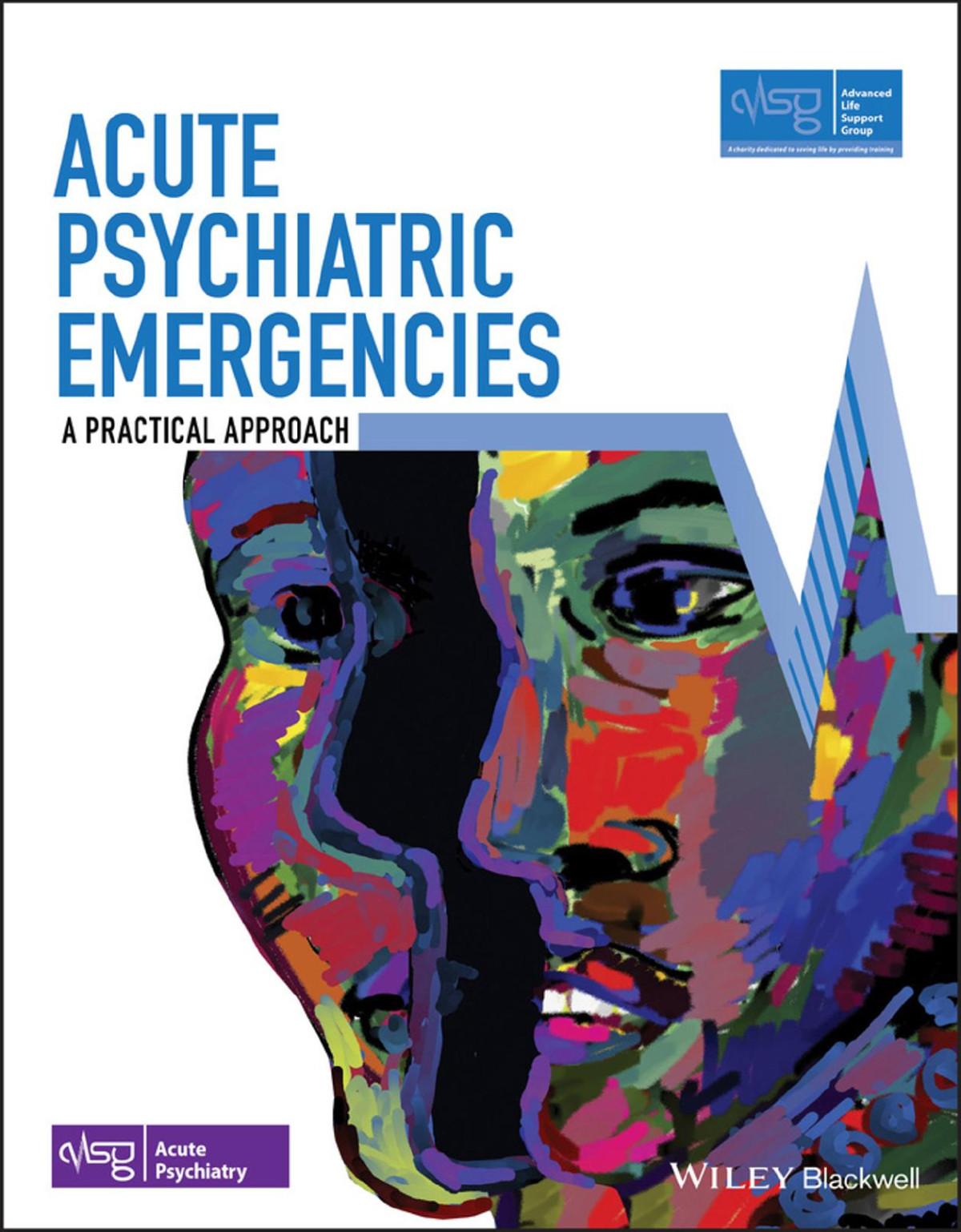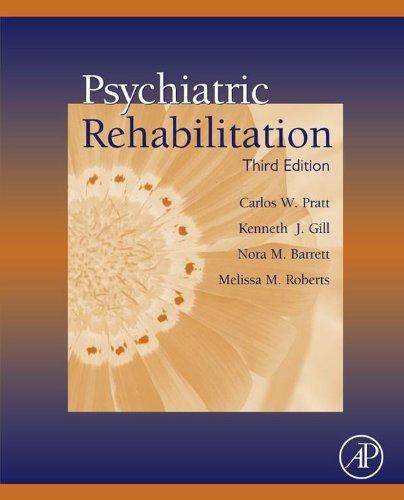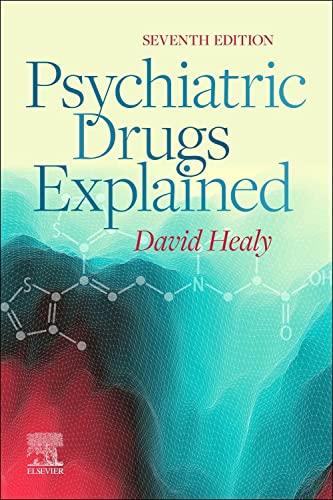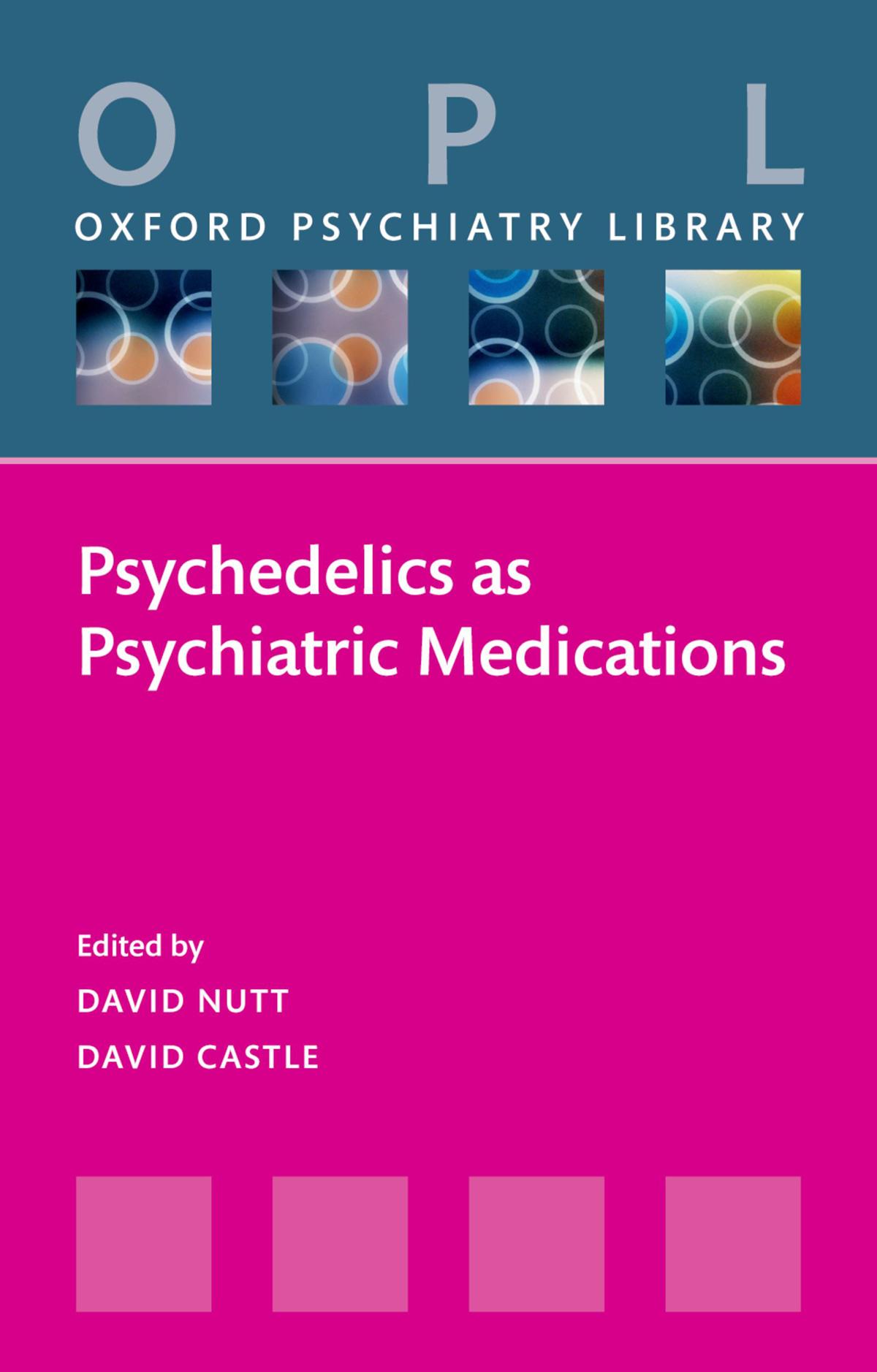Psychedelics
as Psychiatric Medications David Nutt
Visit to download the full and correct content document: https://ebookmass.com/product/psychedelics-as-psychiatric-medications-david-nutt/
More products digital (pdf, epub, mobi) instant download maybe you interests ...
Psychiatric Drugs Explained 7th 7th Edition David Healy
https://ebookmass.com/product/psychiatric-drugsexplained-7th-7th-edition-david-healy/
Neuroplasticity as a convergent mechanism of ketamine and classical psychedelics Lily R. Aleksandrova & Anthony G. Phillips
https://ebookmass.com/product/neuroplasticity-as-a-convergentmechanism-of-ketamine-and-classical-psychedelics-lily-raleksandrova-anthony-g-phillips/
Philosophy of Psychedelics Chris Letheby
https://ebookmass.com/product/philosophy-of-psychedelics-chrisletheby/
Schizophrenia and Psychiatric Comorbidities: Recognition Management (Oxford Psychiatry Library Series) 1st Edition David J. Castle
https://ebookmass.com/product/schizophrenia-and-psychiatriccomorbidities-recognition-management-oxford-psychiatry-libraryseries-1st-edition-david-j-castle/
Gahartu2019s 2019 Intravenous Medications: A Handbook for Nurses and Health
https://ebookmass.com/product/gaharts-2019-intravenousmedications-a-handbook-for-nurses-and-health/
Acute Psychiatric Emergencies 1st Edition Advanced Life Support Group (Alsg)
https://ebookmass.com/product/acute-psychiatric-emergencies-1stedition-advanced-life-support-group-alsg/
Aircraft Valuation: Airplane Investments as an Asset Class 1st Edition David Yu
https://ebookmass.com/product/aircraft-valuation-airplaneinvestments-as-an-asset-class-1st-edition-david-yu/
Psychiatric Rehabilitation 3rd Edition, (Ebook PDF)
https://ebookmass.com/product/psychiatric-rehabilitation-3rdedition-ebook-pdf/
Psychiatric Drugs Explained, 7th Edition Healy
https://ebookmass.com/product/psychiatric-drugs-explained-7thedition-healy/
Psychedelics as Psychiatric Medications
Psychedelics as Psychiatric Medications
Edited by
David Nutt
Edmond J. Safra Prof of Neuropsychopharmacology and director of the Centre for Psychedelic Research, Department of Psychiatry, Division of Brain Sciences, Commonwealth Building, Hammersmith Hospital, UK
David
Castle
Scientific Director, Centre for Complex Interventions, Centre for Addiction and Mental Health; and Professor, Department of Psychiatry, The University of Toronto, Canada
Great Clarendon Street, Oxford, OX2 6DP, United Kingdom
Oxford University Press is a department of the University of Oxford. It furthers the University’s objective of excellence in research, scholarship, and education by publishing worldwide. Oxford is a registered trade mark of Oxford University Press in the UK and in certain other countries
© Oxford University Press 2023
The moral rights of the authors have been asserted
First Edition published in 2023
All rights reserved. No part of this publication may be reproduced, stored in a retrieval system, or transmitted, in any form or by any means, without the prior permission in writing of Oxford University Press, or as expressly permitted by law, by licence or under terms agreed with the appropriate reprographics rights organization. Enquiries concerning reproduction outside the scope of the above should be sent to the Rights Department, Oxford University Press, at the address above
You must not circulate this work in any other form and you must impose this same condition on any acquirer
Published in the United States of America by Oxford University Press 198 Madison Avenue, New York, NY 10016, United States of America
British Library Cataloguing in Publication Data
Data available
Library of Congress Control Number: 2022952041
ISBN 978–0–19–286360–7
eISBN 978–0–19–267852–2
DOI: 10.1093/med/9780192863607.001.0001
Oxford University Press makes no representation, express or implied, that the drug dosages in this book are correct. Readers must therefore always check the product information and clinical procedures with the most up-to-date published product information and data sheets provided by the manufacturers and the most recent codes of conduct and safety regulations. The authors and the publishers do not
accept responsibility or legal liability for any errors in the text or for the misuse or misapplication of material in this work. Except where otherwise stated, drug dosages and recommendations are for the non-pregnant adult who is not breastfeeding
Links to third party websites are provided by Oxford in good faith and for information only. Oxford disclaims any responsibility for the materials contained in any third party website referenced in this work.
Preface
We are very pleased to present this book, which provides a current appraisal of a very fast-moving field. We are gratified by having chapters by thought leaders from across the world, who have given a good sense of where we came from, where we are, and where we are going, in terms of psychedelics as treatments for psychiatric maladies and addictions. It should be noted that this book has embraced a very broad definition of ‘psychedelics and related agents’, including ketamine (a dissociative anaesthetic) and Nmethyl-3,4-methylenedioxyamphetamine (MDMA, an entactogen), along with the ‘classic’ psychedelics (e.g. psilocybin, D-lysergic acid diethylamide (LSD), dimethyltryptamine (DMT), ibogaine, and mescaline), as well as some ‘lesser-known’ agents (muscimol, salvinorin A, mescaline, 2C-B, and 5-methoxy-DMT). This has been in part a response to the fact that these agents are all novel in terms of mechanisms of action; that all entail a rethinking of traditional therapeutic ‘wrap around’, in terms of the psychotherapeutic component (which, for ease, we refer to as ‘psychedelic-assisted psychotherapy’ or PAP), and that all are in a stage of excited discovery. Indeed, the excitement associated with the revisiting of these agents as potential treatments for mental health and addictions is evidenced by a massive surge in publications, lectures, and media coverage.
We believe this book will be helpful to specialists and nonspecialists alike. The science and art of psychedelic psychiatry are presented, along with due cautions and concerns for how the future of this fascinating group of compounds can, along with psychotherapeutic support, help patients with a range of mental health and addiction problems.
David Nutt and David Castle
List of abbreviations
Historical overview
ChaseThompsonandIshratM.Husain
The psychotherapeutic component of psychedelic medicine
LaurieHigbedandBenSessa
Psilocybin
JamesJ.RuckerandDavidErritzoe
MDMA
MichaelC.MithoeferandDavidE.Presti
Lysergic acid diethylamide: In search of the wonder drug
MihaiAvram,FelixMüller,andStefanBorgwardt Ayahuasca
DanielPerkins,SimonG.D.Ruffell,andJeromeSarris
Ibogaine: Ibogaine therapy as a method of care treatment for opioid dependence
DeborahC.Mash
Other psychedelics
JamesLindenandDanielRobin
JoshuaD.DiVincenzo,JoshuaD.Rosenblat,andRogerS. McIntyre
Risks and adverse events associated with the use of psychedelics
JoannaC.Neill,MohammedShahid,RosalindGittins,AnneK. Schlag,andFrankI.Tarazi
Psychedelics as psychiatric medicines: Current challenges and future prospects
DavidCastle,NicoleLedwos,andDavidNutt
Index
List of abbreviations
5-HT Serotonin
ACE Adverse childhood experience
ACLS Advanced Cardiac Life Support
AR Augmented reality
ASI Addiction Severity Index
BD Bipolar disorder
BDNF Brain-derived neurotrophic factor
BOLD Blood oxygen level-dependent
CADSS Clinician-Administered Dissociative States Scale
CAPS Clinician-Administered PTSD Scale
CBCT Cognitive-behavioural conjoint therapy
CDLIN Controlled Drug Local Intelligence Networks
CEQ Challenging Experiences Questionnaire
CNS Central nervous system
CRP C-reactive protein
CSA Controlled Substances Act
DAAC Drug Abuse Advisory Committee
DMN Default-mode network
DMT N, N-dimethyltrpyamine
DOS Delirium observation scale
DSM-5 Diagnostic andStatisticalManualofMentalDisorders, fifth ed.
EBI Emotional Breakthrough Inventory
EC Endothelial cell
ECG Electrocardiogram
EEG Electroencephalogram
EMA European Medicines Agency
FDA Food and Drug Administration
FM Frequency Modulation
GABA γ-Aminobutyric acid
GERD Gastroesophageal reflux
GLP Good Laboratory Practice
GPCR G-protein coupled receptor
HNK Human Natural Killer
IASC Inventory of Altered Self-Capacities
IBN Intrinsic brain networks
ICD-10 International Classification of Diseases, tenth ed.
IPT interpersonal psychotherapy
LSD D-lysergic acid diethylamide
MAOI Monoamine oxidase-A enzyme inhibitor
MAPS Multidisciplinary Association for Psychedelic Studies
MDA 3,4-Methylenedioxyamphetamine
MDD Major depressive disorder
MDMA 3,4-Methyl-enedioxy-methamphetamine
MEG Magnetoencephalography
MEQ Mystical Experiences Questionnaire
MHRA Medicines and Healthcare products Regulatory Agency
MI Motivational interviewing
NHMRC National Health and Medical research Council
NICE National Institute for Health and Care Excellence
NIDA National Institute on Drug Abuse
NIMH National Institutes for Mental Health
NMDA N-methyl-D-aspartate
NMDAR N-methyl D-aspartate receptor
NREM Non-Rapid Eye Movement
OWS Opioid Withdrawal Syndrome
PAP Psychedelic-assisted psychotherapy
PCP Phencyclidine
PET Positron emission tomography
PFC Prefrontal cortex
PIHKAL Phenethylamines I Have Known And Loved
PIS Psychological Insight Scale
PK Pharmacokinetics
PKC Protein kinase C
PTSD Posttraumatic stress disorder
RAM Reward Activation Model
RBANS Repeatable Battery for the Assessment of Neuropsychological Status
RCT Randomized controlled trial
REMS Risk Evaluation and Mitigation Strategy
SA Substance Abuse
SAE Serious adverse event
SCS Self-Compassion Scale
SERT Serotonin transporter
SNRI Serotonin and noradrenaline reuptake inhibitor
SOWS Subjective Opioid Withdrawal Scale
SRI Serotonin Reuptake Inhibitor
SSRI Selective serotonin reuptake inhibitor
TCA Tricyclic antidepressants
TD Tardive Dyskinesia
TdP Torsade des Points
TEAE Treatment-emergent adverse event
TRD Treatment-resistant depression
VA Veterans Affairs
VSMC Vascular smooth muscle cell
CHAPTER 1
Historical overview
Chase Thompson and Ishrat M. Husain
KEY POINTS
Psychedelic compounds have been used among different cultural groups for millenia.
Between the 1950s and 1970, psychedelics showed promise in early clinical trials for the treatment of various psychiatric disorders.
The classification of psychedelic compounds as Schedule 1 drugs and the resultant decline in scientific research were primarily driven by political motivations as opposed to evidence of harm.
Psychedelic science is experiencing a resurgence because of encouraging findings from small contemporary studies that suggest efficacy for the treatment of psychiatric disorders.
Terminology
The ‘classic’ psychedelics are a group of compounds that share similar pharmacologic and psychotropic characteristics. They include psilocybin, D-lysergic acid diethylamide (LSD), dimethyltryptamine (DMT), ibogaine, and mescaline. Notable exclusions from this group are MDMA and ketamine, which have overlapping but sufficiently distinct pharmacologic profiles (Roseman et al., 2014; Nichols, 2016; Nutt, 2019) but which we do include in this book, for reasons
articulated in Chapter 11. The term ‘psychedelic’ is derived from ancient Greek and translates roughly to ‘mind-manifesting’ (Savage, 1964)—it was first proposed by a psychiatrist named Humphry Osmond in 1956 (Osmond, 1957). Other terms have been proposed, including ‘hallucinogen’, or ‘psychotomimetic’, though these terms are arguably too simplistic or inaccurate, or imply that the psychedelics are wholly pathogenic (Nichols, 2016). The descriptor ‘psychedelic’ seems to come closest to describing the complex psychological phenomena evoked by these compounds. Notably, the fifth and most recent iteration of the Diagnostic and Statistical Manual of Mental Disorders (DSM-5), and the International Classification of Diseases (or ICD-10) continue to use the term ‘hallucinogen’, as do some scientists and clinicians.
‘The first wave’: the origins and ancient use of psychedelic compounds
Psychedelic compounds are ubiquitous within the natural world. DMT, for one, has been identified and isolated from a vast array of different plant and animal species (Winstock et al., 2014; Halpern, 2004; Shulgin and Shulgin, 1997; Cameron & Olson, 2018), and has even been identified within the mammalian brain (Christian et al., 1977; Barker et al., 2012; Dean et al., 2019). Similarly, psilocybinproducing fungi have been found around the globe, and across multiple fungal lineages (Andersson et al., 2009; Reynolds et al., 2018). Despite their ubiquity, the function that these compounds serve in nature is only partially understood. Psilocybin, for example, is an alkaloid that can be found throughout the mushroom body and is known to comprise up to 2% of the dry weight of the mushroom (Beug & Bigwood, 1982). The prevalence of psilocybin among mushroom species (and within an individual mushroom) suggests that psilocybin has an important functional role. Akin to other naturally occurring alkaloids (e.g. caffeine, atropine), psilocybin may, in part, serve a protective role for the fungi by reducing the appetite
of insects who attempt to consume them (Awan et al., 2018; Reynolds et al., 2018; Wink, 2020). Humans experience similar reductions in appetite after ingesting psychedelic compounds (Holze et al., 2022; Studerus et al., 2011), though it is unclear whether the associated psychological experience is simply an accidental byproduct of the appetite-suppressing effects or whether the psychedelic effects are functionally independent and important.
Terence McKenna, a popular mystic and ethnobotanist, believed that the psychedelic effects of psilocybin-containing fungi were a vital component of human evolution. He coined the ‘Stoned Ape’ theory to describe how the consumption of psilocybin-producing mushrooms may have altered the evolutionary course of the human brain and cognition. His theory is based on the last 100,000 years (or more), when cattle had become a dietary staple for early nomadic humans. Consequently, these early humans would have tracked herds of cattle, encountered, and consumed psilocybincontaining mushrooms growing in the cattle’s dung (McKenna, 1999). McKenna proposed that regular consumption of these fungi, along with the associated psychedelic experience, was a major driving force behind the rapid cognitive and frontal cortical expansion of Homoerectus—a development which paved the way to modern-day Homo sapiens. Specifically, he believed that psilocybin facilitated the development of speech, enhanced creativity, hunting, and reproduction within psilocybin-consuming groups (among other benefits). As a result, groups of early humans who consumed psilocybin-containing mushrooms held an evolutionary advantage over those who did not, and such advantages would have led to greater flourishing and expansion of these groups. His theory has largely been ignored by the scientific community because there is limited evidence to support or refute its tenets. Nonetheless the ‘Stoned Ape’ theory remains an interesting conjecture, suggesting that the ingestion of psychedelic compounds was a fundamental and widespread practice among early humans, one from which modernday humans have largely deviated.
One argument that indirectly supports McKenna’s theory is the widespread use of psychedelic compounds among ancient and
indigenous cultures, often as a component of spiritual or medicinal practices (Walter & Fridman, 2004; MAPS, 2007; Doblin et al., 2019; George et al., 2021). In a region crossing Mexico and Texas, archaeological and carbon-dating evidence suggest that the indigenous people in this area were consuming mescaline-containing cacti around 10,500 BP (Adovasio & Fry, 1976). Across the world, in a cave in Algeria, there is a cave painting that depicts a psilocybincontaining mushroom that is estimated to be around 7000–9000 BP (Samorini, 1992). Similarly, cave paintings of psychedelic fungi have been found in Spain as well (Akers et al., 2011). In ancient Greece, it has been hypothesized that the Eleusinianmysteries, a legendary set of secret religious ceremonies where participants often experienced deep revelations and hallucinations, were inspired by psychedelic compounds present in the wine (Wasson, 2008). Together, these pieces of evidence suggest that psychedelics played an important role within ancient and indigenous cultures, and there are likely many more instances than we have available evidence for. The use of psychedelics by indigenous peoples and ancient civilizations has been coined the ‘the first wave’ (Austin et al., 2017).
The discovery of LSD and initial wave of psychedelic research
The original synthesis of LSD in 1938 by Albert Hofmann, a Swiss chemist, was a crucial event in psychedelic history (Hofmann & Ott, 1980). He synthesized LSD from ergotamine, an alkaloid-derivative of ergot, which is a fungus that grows on rye grains (Liester, 2014). At the time, Hofmann was in search of a medication that could be used as a cardio-respiratory stimulant—he was not aware of the potent psychoactive effects of LSD until he mistakenly ingested the substance through his fingertips five years later. The discovery was one of a few seminal events that led to the reintroduction of psychedelics to Western society. Another was when Gordon Wasson, an American banker, travelled to Oaxaca, Mexico, and met with
Maria Sabina, a Mazatec curandera (medicine woman). She shared with him a sacred Mesoamerican ritual called velada, which involved the ingestion of psilocybin (Wasson, 1961). As a result of his experience, Wasson wrote the popular article ‘Seeking the Magic Mushroom’ in Life magazine in 1957, which further added to the growing enthusiasm for psychedelics in Western society (Wasson, 1957).
Soon after the discovery of LSD, the field of psychiatry which at the time was primarily focused on psychotherapy and psychoanalysis —became fascinated by the compound and its therapeutic potential (Belouin & Henningfield, 2018). LSD and psilocybin were brought to market by Sandoz pharmaceuticals under the trade names Delysid, and Indocybin, respectively, and an era of clinical study commenced. Researchers quickly noticed that LSD produced an interesting array of psychological effects, including euphoria, anxiety, dissociation, increased empathy, visual perceptual changes, and others (Savage, 1952; Deshon et al., 1952; Freedman, 1968). Some early studies of LSD included individuals with schizophrenia, where reports indicate that the study participants exhibited worsening of symptoms, such as intensification of delusions and preoccupations, increased vividness of pre-existing hallucinations (Cholden et al., 1955), or a ‘regression to a prime stage’ of their psychosis (Anastasopoulos & Photiades, 1962). On the other hand, individuals with prominent negative symptoms of schizophrenia seemed to be relatively immune to the effects of LSD (Cholden et al., 1955).
Although many of these studies were methodologically limited and unethical by today’s standards, it was increasingly believed that LSD (and psychedelics more broadly) had limited therapeutic benefit, and evident potential harms for individuals with schizophrenia or bipolar disorder (Denber & Merlis, 1955; Fink et al., 1966; Frosch et al., 1965; Rucker et al., 2018). The observation that LSD seemed to reproduce or provoke certain aspects of the psychotic experience was reason enough for some to classify LSD as a ‘psychotomimetic’, and provided support for the idea that aspects of psychotic illness were biologically based (Geyer & Vollenweider, 2008). Interestingly, the observation that the psychological effects induced by LSD were
related to activation of brain-based serotonin receptors, led to greater interest in the neurotransmitter and ignited the field of serotonin neuroscience in the 1950s (Nichols, 2016).
While studies were ongoing in schizophrenia, psychedelics were also being investigated for potential therapeutic effects in addictions and internalizing disorders such as depression, anxiety, and obsessive-compulsive disorder (Sandison et al., 1954; Rucker et al., 2018; Nichols, 2020). In these disorders, psychedelics seemed to have greater therapeutic success and less potential harms (Rucker et al., 2016). For example, studies of psychedelics in individuals with disordered alcohol use showed promise in helping individuals slow down, or even stop, dangerous patterns of drinking (Jensen, 1962). However, similar to the trials of psychedelics in schizophrenia, many of these studies were poorly designed, making their overall conclusions uncertain (Rucker et al., 2018). During these initial studies an important observation emerged—that the environment encompassing one’s psychedelic experience seemed to be an important factor in the clinical outcome. For example, the availability of a support person, involvement of music during the session, or the use of psychotherapy, were all observed to influence the psychedelic experience and were associated with the degree of therapeutic effectiveness (Cholden et al., 1955; Robbins et al., 1967; CarhartHarris et al., 2018).
The end of the first wave of psychedelic research
During the initial wave of psychedelic research, there were roughly more than a hundred studies carried out with Delysid (or LSD) (Nutt & Carhart-Harris, 2021) and an additional hundred studies with Indocybin (or synthetic psilocybin) (Nichols, 2020). However, as quickly as this initial wave of studies emerged, things came to an abrupt halt in the early 1970s as a result of several coinciding factors (see Box 1.1). For one, the patents on Delysid and Indocybin expired
Box 1.1 Factors leading to the end of the second wave
Sandoz patents on Indocybin and Delysid ended
• in the 1960s, and therefore, Sandoz’ financial incentive to fund further clinical trials diminished—though a significant proportion of funding for psychedelic trials also came from the National Institutes for Mental Health in the United States (NIMH) (Bonson, 2018).
•
•
Psychedelics became associated with the anti–Vietnam War movement and became a target of government scrutiny and regulation to criminalize political dissidents as ‘drug users’
Media coverage of psychedelic compounds focused on adverse outcomes and unethical use by the CIA as part of ‘MKUltra’
Psychedelics became classified as Schedule I drugs under the UN convention, which defined them as having no accepted medical use, making ethics approval and research funding difficult to obtain
Perhaps a more powerful influence associated with the decline in psychedelic research was the shifting public and political narratives around these compounds. Psychedelics had ‘leaked out of the laboratory’ in the United States and became part of the hippie subculture and anti–Vietnam War movement (Sessa, 2012; Nichols, 2016). At the time, the anti-war movement was placing increasing pressures on the Nixon administration to end the unpopular war. In response, the Nixon administration sought to discredit the anti-war movement by labelling dissidents as drug users and criminals (Schultz, 2013; Baker, 2017). The Nixon administration passed the Controlled Substances Act (CSA), a federal drug policy that allowed the government to closely regulate the use and distribution of psychedelic compounds (Nutt et al., 2013; Belouin & Henningfield, 2018). Many presumed that the government had ulterior political motives in their implementation of the CSA and subsequent ‘war on drugs’ that followed, yet it was not until the interview of one of Richard Nixon’s top presidential aids, John Ehrlichman, that this sentiment was confirmed (Baum, 2016; LoBianco, 2016):
“We knew we couldn’t make it illegalto be eitheragainst the war or black, but by getting the public to associate the hippies with marijuana and blacks with heroin. And then criminalizing both heavily, we could disrupt those communities We could arrest their leaders, raid their homes, break up their meetings, and vilify them night after night on the evening news. Did we know we were lying aboutthe drugs?Ofcourse we did.”
John Ehrlichman 1994
In addition to the increasing government regulation and criminalization of psychedelic compounds, fears grew regarding their associated physiologic and psychological harms. Reports in the media claimed, often without sufficient evidence, that LSD could lead to death by suicide, cause chromosomal damage (New York Times, 1971) or cause deformed offspring (New York Times, 1967).
Concerns were also raised about the possibility of ‘flashbacks’ after use of LSD, that is, re-experiencing visual perceptual changes long after the effects of the substance had worn off. Although the legitimacy of flashbacks is still a topic of debate, the phenomenon was added to the DSM-III-R as ‘post-hallucinogen perception disorder’ in 1986, and would later become renamed ‘hallucinogen persisting perception disorder’ in the DSM-5 (Halpern & Pope, 2003; Orsolini et al., 2017).
Psychedelics continued to be dragged down a morally dubious path when Timothy Leary, a psychologist and psychedelic advocate working at Harvard University, was fired by the university in 1963 for allegedly providing psychedelics to his students. Leary’s fervent promotion for the use of psychedelics, and his ostensible libertinism, led him to be labelled the ‘most dangerous man in America’ by former President Nixon (Minutaglio & Davis, 2018)—although others have challenged this supposed labelling (Gunther, 2020). Possibly one of the most disturbing revelations related to psychedelics was their use by the CIA in illegal mind-control and torture-based experiments as a part of project ‘MKUltra’ (US Senate, 1977; Szalavitz, 2012).
While psychedelics became strictly regulated under the CSA, the public was persuaded that these strict regulations were both rational
and necessary. Within the United States, psychedelics were classified as ‘Schedule I’ substances, meaning that they were considered to have no legitimate medical use and a high potential for abuse and harm (Bonson, 2018). Many countries around the globe followed suit with similar drug policies, in large part due to pressures from the United Nations (Khan, 1979; Rucker, 2015; Walsh, 2016). Although it could be reasonably argued that some degree of regulatory control was warranted due to reports of adverse outcomes associated with psychedelic use, their classification under Schedule I status halted any further research that could have provided a more complete understanding of their potential harms and benefits (Smart & Bateman, 1967; Nutt et al., 2013; Nichols & Grob, 2018). Under Schedule I status, funding for psychedelic research was essentially unobtainable, and the field came to a standstill that would go on for several decades (Rucker et al., 2018).
The modern psychedelic renaissance or the ‘third wave’
In the 1990s, a group of scientists reignited the field of psychedelic research after a near twenty-five-year pause (Carhart-Harris & Goodwin, 2017; Rucker et al., 2018). These groups were led by Leo Hermle in Germany (Hermle et al., 1992; Hermle et al., 1998), Rick Strassman in the United States (Strassman & Qualls, 1994), and Franz Vollenweider in Switzerland (Vollenweider et al., 1997; Vollenweider et al., 1998). To get their research approved in a time of strict regulation, these scientists had to work closely with governmental regulatory authorities and advocate for the value of their work (Strassman, 2018). Still, after twenty-five years of hiatus, the psychedelics had remained compounds of interest in the field of mental health, in part, due to the dearth of other new and effective psychiatric treatments (Nutt, 2020).

Figure 1.1 A timeline of psychedelic use throughout history, separated into the first, second, and third waves; the third wave has continued despite ongoing restrictions from the prohibition era.
The ‘third wave’, while still ongoing, has had some important differences from the second. For one, more attention has been paid to research methodology, such that the outcomes from more recent studies have generally been more reliable and well-defined (Rucker et al., 2018). In addition, and as detailed in other chapters in this book, modern technologies, not available during the second wave, such as functional magnetic resonance (or fMRI), have enabled researchers to gain fascinating insights into the ways in which these compounds affect brain function (Carhart-Harris et al., 2012; Carhart-Harris et al., 2014; Carhart-Harris & Friston, 2019). Lastly, many third-wave studies have been relatively small and primarily focused on safety and tolerability of psychedelic-assisted psychotherapy, rather than efficacy per se (Schunemann et al., 2006; Nutt, 2021). Along these lines, most recent studies have had exclusion criteria for psychotic and bipolar-based illnesses. Given the historical pitfalls of psychedelic research, third-wave researchers have been intensely aware of the potential setbacks that could occur from work lacking sufficient scientific rigour or attention to safety. In the small contemporary trials completed thus far, it appears that psychedelic-assisted psychotherapy is safe and potentially
effective in the treatment of various mental and substance use disorders (Johnson, 2019; Andersen et al., 2021). As an overview, studies have suggested therapeutic efficacy of psychedelic-assisted psychotherapy in treating depressive disorders (Carhart-Harris et al., 2016; Carhart-Harris et al., 2021), anxiety and depression associated with advanced or life-threatening cancers (Ross et al., 2016; Griffiths et al., 2016); smoking cessation (Johnson et al., 2017), reducing alcohol use (Bogenschutz et al., 2015); and evoking mystical experiences (Griffiths et al., 2006; Griffiths et al., 2011; Griffiths et al., 2018). However, larger studies with rigorous clinical trial design and greater statistical power are needed to more accurately determine the safety and efficacy of psychedelic-assisted psychotherapy (see Chapter 11).
Promising early data for psychedelic-assisted psychotherapy and evidence for physiologic safety (Johansen & Krebs, 2015; Nichols & Grob, 2016) have led to pressures for reduced government regulation, and increased access for researchers, prescribers, and the general public (Johnson et al., 2008; Rucker, 2015). The degree to which psychedelics should be deregulated remains a topic of disagreement among experts (Strassman, 2018; Johnson et al., 2018), and yet while government and scientific communities struggle to find an optimum of regulation, the public has not been patiently waiting. Online and media portrayals of psychedelics, where they have been described as mood, cognitive, or productivity enhancers, have led to increasing popularity and an uptick in use, particularly of ‘micro-dosing’ regimens (Dean, 2017; Hogan, 2017; Lea et al., 2020; Yockey et al., 2020). In addition, private businesses have forged ahead in making psychedelic compounds widely accessible through illegal online stores and dispensaries in what has become a booming and unregulated market (Aday et al., 2019; The Economist, 2019). Nonetheless, psychedelic use remains relatively rare, where one-year prevalence in the United States was less than 1% in 2018 (Yockey et al., 2020), though this figure may well go up due to increasing ease of access in obtaining psychedelic compounds, the degree of public interest in psychedelic research, and a cultural zeitgeist that is fascinated with self-improvement and self-actualization.
Overall, psychedelics have played an intriguing and complex role in the history of humankind. Their powerful psychological effects have fascinated some, and evoked fear and disgust in others, to the extent that these compounds have become and remain criminalized throughout the world. Yet, the growing appreciation of the need for new treatments in mental health, coupled with changing attitudes towards psychedelic drugs, has set the scene for a new frontier in psychedelic research. The time is opportune to conduct further welldesigned, scientifically rigorous, mechanistic clinical trials of these compounds to inform clinical translation. Only time and further study will reveal the role these compounds have to play in psychiatric care and society at large. The rest of this book takes up this story, addressing individual compounds, looking at the current state of the science, and scoping future directions, opportunities, and potential pitfalls.
REFERENCES
Aday JS, Bloesch EK, Davoli CC (2019) A year of expansion in psychedelic research, industry, and deregulation. Drug Science, Policy and Law 6:2050324520974484.
Adovasio JM, Fry GF (1976) Prehistoric psychotropic drug use in northeastern Mexico and Trans-Pecos Texas. Economic Botany 30:94–96.
Akers BP, Ruiz JF, Piper A, Ruck CA (2011) A prehistoric mural in Spain depicting neurotropic psilocybe mushrooms? Economic Botany 65:121–128.
Anastasopoulos G, Photiades H (1962) Effects of LSD-25 on relatives of schizophrenic patients. Journal of Mental Science 108:95–98.
Andersen KA, Carhart-Harris R, Nutt DJ, Erritzoe D (2021) Therapeutic effects of classic serotonergic psychedelics: a systematic review of modern-era clinical studies. Acta Psychiatrica Scandinavica 143:101–118.
Andersson C, Kristinsson J, Gry J (2009) Occurrence and use of hallucinogenic mushrooms containing psilocybin alkaloids. Nordic Council of Ministers.
Austin P, Tudorie V, Stone R, et al. (2017) What is the Third Wave of Psychedelics? Available at: https://thethirdwave.co/about/ (accessed November 5, 2021).
Awan AR, Winter JM, Turner D, et al. (2018) Convergent evolution of psilocybin biosynthesis by psychedelic mushrooms. BioRxiv 374199.
Baker P (2017) Nixon tried to spoil Johnson’s Vietnam peace talks in ’68, notes show. New York Times.
Barker SA, McIlhenny EH, Strassman R (2012) A critical review of reports of endogenous psychedelic N, N-dimethyltryptamines in humans: 1955–2010.
Drug Testing and Analysis 4:617–635.
Baum D (2016) Legalize it all. Harper’s Magazine 24:21–32.
Belouin SJ, Henningfield JE (2018) Psychedelics: where we are now, why we got here, what we must do. Neuropharmacology 142:7–19.
Beug MW, Bigwood J (1982) Psilocybin and psilocin levels in twenty species from seven genera of wild mushrooms in the Pacific Northwest, USA. Journal of Ethnopharmacology 5:271–285.
Bogenschutz MP, Forcehimes AA, Pommy JA, et al. (2015) Psilocybin-assisted treatment for alcohol dependence: a proof-of-concept study. Journal of Psychopharmacology 29:289–299.
Bonson KR (2018) Regulation of human research with LSD in the United States (1949–1987). Psychopharmacology 2018:591–604.
Cameron LP, Olson DE (2018) Dark classics in chemical neuroscience: N, NDimethyltryptamine (DMT). ACS Chemical Neuroscience 9:2344–2357.
Carhart-Harris RL, Erritzoe D, Williams T, et al. (2012) Neural correlates of the psychedelic state as determined by fMRI studies with psilocybin. Proceedings of the National Academy of Sciences 109:2138–2143.
Carhart-Harris RL, Leech R, Hellyer PJ, et al. (2014) The entropic brain: a theory of conscious states informed by neuroimaging research with psychedelic drugs. Frontiers in Human Neuroscience 8:20.
Carhart-Harris RL, Bolstridge M, Rucker J, et al. (2016) Psilocybin with psychological support for treatment-resistant depression: an open-label feasibility study. Lancet Psychiatry 3:619–627.
Carhart-Harris RL, Goodwin GM (2017) The therapeutic potential of psychedelic drugs: past, present, and future. Neuropsychopharmacology 42:2105–2113.
Carhart-Harris RL, Roseman L, Haijen E, et al. (2018) Psychedelics and the essential importance of context. Journal of Psychopharmacology 32:725–731.
Carhart-Harris RL, Friston, KJ (2019) REBUS and the anarchic brain: toward a unified model of the brain action of psychedelics. Pharmacological Reviews 71:316–344.
Carhart-Harris R, Giribaldi B, Watts R, et al. (2021) Trial of psilocybin versus escitalopram for depression. New England Journal of Medicine 384:1402–1411.
Cholden LS, Kurland A, Savage C (1955) Clinical reactions and tolerance to LSD in chronic schizophrenia. Journal of Nervous and Mental Disease 122:211–221.
Christian ST, Harrison R, Quayle E, et al. (1977) The in vitro identification of dimethyltryptamine (DMT) in mammalian brain and its characterization as a possible endogenous neuroregulatory agent. Biochemical Medicine 18:164–183.
Dean J (2017) Micro-dosing: the drug habit your boss is gonna love. GQ Magazine.
Dean JG, Liu T, Huff S, et al. (2019) Biosynthesis and extracellular concentrations of N, N-dimethyltryptamine (DMT) in mammalian brain. Scientific Reports 9:1–11.
Denber HC, Merlis S (1955) Studies on mescaline I: action in schizophrenic patients. Psychiatric Quarterly 29:421–429.
Deshon HJ, Rinkel M, Solomon HC (1952) Mental changes experimentally produced by LSD (d-lysergic acid diethylamide tartrate). Psychiatric Quarterly 26:33–53.
Doblin RE, Christiansen M, Jerome L, Burge B (2019) The past and future of psychedelic science: an introduction to this issue. Journal of Psychoactive Drugs 51:93–97.
Fink M, Simeon J, Haque W, Itil T (1966) Prolonged adverse reactions to LSD in psychotic subjects. Archives of General Psychiatry 15:450–454.
Freedman DX (1968) On the use and abuse of LSD. Archives of General Psychiatry 18:330–347.
Frosch WA, Robbins ES, Stern M (1965) Untoward reactions to lysergic acid diethylamide (LSD) resulting in hospitalization. New England Journal of Medicine 273:1235–1239.
Gael S (2021) Expert Q&A: MAPS and psychedelic-assisted psychotherapy. Depression. George DR, Hanson R, Wilkinson D, Garcia-Romeu A (2021) Ancient roots of today’s emerging renaissance in psychedelic medicine. Culture, Medicine, and Psychiatry 1–14.
Geyer MA, Vollenweider FX (2008) Serotonin research: contributions to understanding psychoses. Trends in Pharmacological Sciences 29:445–453.
Griffiths RR, Richards WA, McCann U, Jesse R (2006) Psilocybin can occasion mystical-type experiences having substantial and sustained personal meaning and spiritual significance. Psychopharmacology 187:268–283.
Griffiths RR, Johnson MW, Richards WA, et al. (2011) Psilocybin occasioned mystical-type experiences: immediate and persisting dose-related effects. Psychopharmacology 218:649–665.
Griffiths RR, Johnson MW, Carducci MA (2016) Psilocybin produces substantial and sustained decreases in depression and anxiety in patients with life-threatening cancer: a randomized double-blind trial. Journal of Psychopharmacology 30:1181–1197.
Griffiths RR, Johnson MW, Richards WA, et al. (2018) Psilocybin-occasioned mystical-type experience in combination with meditation and other spiritual practices produces enduring positive changes in psychological functioning and in trait measures of prosocial attitudes and behaviors. Journal of Psychopharmacology 32:49–69.
Gunther M (2020) No, Richard Nixon did not call Timothy Leary ‘the most dangerous man in America. Medium.
Halpern JH (2004) Hallucinogens and dissociative agents naturally growing in the United States. Pharmacology and Therapeutics 102:131–138.
Halpern JH, Pope Jr HG (2003) Hallucinogen persisting perception disorder: what do we know after 50 years? Drug and Alcohol Dependence 2003:109–119.
Hermle L, Fünfgeld M, Oepen G, et al. (1992) Mescaline-induced psychopathological, neuropsychological, and neurometabolic effects in normal subjects: experimental psychosis as a tool for psychiatric research. Biological Psychiatry 32:976–991.
Hermle L, Gouzoulis-Mayfrank E, Spitzer M (1998) Blood flow and cerebral laterality in the mescaline model of psychosis. Pharmacopsychiatry 31(S 2):85–91.
Hofmann A, Ott J (1980) LSD: my problem child. Psychedelic Reflections 24.
Hogan E (2017) Turn on, tune in, drop by the office. 1843 Magazine. The Economist Group).
Holze F, Caluori TV, Vizeli P, Liechti ME (2022) Safety pharmacology of acute LSD administration in healthy subjects. Psychopharmacology 239(6):1893–1905.
Jensen SE (1962) A treatment program for alcoholics in a mental hospital. Quarterly Journal of Studies on Alcohol 23:315–320.
Johansen PØ, Krebs TS (2015) Psychedelics not linked to mental health problems or suicidal behavior: a population study. Journal of Psychopharmacology 29:270–279.
Johnson MW, Richards WA, Griffiths RR (2008) Human hallucinogen research: guidelines for safety. Journal of Psychopharmacology 22:603–620.
Johnson MW, Garcia-Romeu A, Griffiths RR (2017) Long-term follow-up of psilocybin-facilitated smoking cessation. American Journal of Drug and Alcohol Abuse 43:55–60.
Johnson MW, Griffiths RR, Hendricks PS, Henningfield JE (2018) Setting the record straight on medical psilocybin. Scientific American.
Johnson MW, Hendricks PS, Barrett FS, Griffiths RR (2019) Classic psychedelics: an integrative review of epidemiology, therapeutics, mystical experience, and brain network function. Pharmacology and Therapeutics 197:83–102.
Khan I (1979) Convention on psychotropic substances, 1971: the role and responsibilities of the World Health Organization. Progress in NeuroPsychopharmacology 3:11–14.
Lea T, Amada N, Jungaberle H (2020) Psychedelic microdosing: a subreddit analysis. Journal of Psychoactive Drugs 52:101–112.
Liester MB (2014) A review of lysergic acid diethylamide (LSD) in the treatment of addictions: historical perspectives and future prospects. Current Drug Abuse Reviews 7:146–156.
LoBianco T (2016) Report: aide says Nixon’s war on drugs targeted blacks, hippies. CNN Politics.
McKenna T (1999) Food of the gods: the search for the original tree of knowledge: a radical history of plants, drugs and human evolution. Random House.
Minutaglio B, Davis SL (2018) The most dangerous man in America: Timothy Leary, Richard Nixon and the hunt for the fugitive king of LSD. Twelve.
Multidisciplinary Association for Psychedelic Studies (2007) The medical history of psychedelic drugs. University of Cambridge.
Nichols DE (2016) Psychedelics. Pharmacological Reviews 68:264–355.
Nichols DE, Grob CS (2018) Is LSD toxic? Forensic Science International 284:141–145.
Nichols DE, Walter H (2020) The history of psychedelics in psychiatry. Pharmacopsychiatry 54:151–166.
Nutt DJ (2019) Psychedelic drugs—a new era in psychiatry? Dialogues in Clinical Neuroscience 21:139.
Nutt DJ, King LA, Nichols DE (2013) Effects of Schedule I drug laws on neuroscience research and treatment innovation. Nature Reviews Neuroscience 14:577–585.
Nutt DJ, Erritzoe D, Carhart-Harris R (2020) Psychedelic psychiatry’s brave new world. Cell 181:24–28.
Nutt DJ, Carhart-Harris R (2021) The current status of psychedelics in psychiatry. JAMA Psychiatry 78:121–122.
Orsolini L, Papanti GD, De Berardis D, et al. (2017) The ‘endless trip’ among the NPS users: psychopathology and psychopharmacology in the hallucinogenpersisting perception disorder. A systematic review. Frontiers in Psychiatry 8:240.
Osmond H (1957) A review of the clinical effects of psychotomimetic agents. Ann New York Academy of Sciences 66:418–434.
Reynolds HT, Vijayakumar V, Gluck-Thaler E, et al. (2018) Horizontal gene cluster transfer increased hallucinogenic mushroom diversity. Evolution Letters 2:88–101.
Robbins E, Robbins L, Frosch WA, Stern M (1967) Implications of untoward reactions to hallucinogens. Bulletin of the New York Academy of Medicine 43:985.
Roseman L, Leech R, Feilding A, et al. (2014) The effects of psilocybin and MDMA on between-network resting state functional connectivity in healthy volunteers. Frontiers in Human Neuroscience 8:204.
Ross S, Bossis A, Guss J, et al. (2016) Rapid and sustained symptom reduction following psilocybin treatment for anxiety and depression in patients with lifethreatening cancer: a randomized controlled trial. Journal of Psychopharmacology 30:1165–1180.
Rucker JJ (2015) Psychedelic drugs should be legally reclassified so that researchers can investigate their therapeutic potential. BMJ 350:h2902.
Rucker JJ, Jelen LA, Flynn S, et al. (2016) Psychedelics in the treatment of unipolar mood disorders: a systematic review. Journal of Psychopharmacology 30:1220e1229.
Rucker JJ, Iliff J, Nutt DJ (2018) Psychiatry & the psychedelic drugs: past, present & future. Neuropharmacology 142:200–218.
Samorini G (1992) The oldest representations of hallucinogenic mushrooms in the world (Sahara Desert, 9000–7000 BP). Integration 2:69–78.
Sandison RA, Spencer AM, Whitelaw JDA (1954) The therapeutic value of lysergic acid diethylamide in mental illness. Journal of Mental Science 100:491–507.
Savage C (1952) Lysergic acid diethylamide (LSD-25) a clinical-psychological study. American Journal of Psychiatry 108:896–900.
Savage C, Savage E, Fadiman J, Harman W (1964) LSD: therapeutic effects of the psychedelic experience. Psychological Reports 14:111–120.
Schultz C (2013) Nixon prolonged Vietnam War for political gain—and Johnson knew about it, newly unclassified tapes suggest. Smithsonian Magazine.
Schunemann HJ, Fretheim A, Oxman AD (2006) Improving the use of research evidence in guideline development: 9. Grading evidence and recommendations. Health Research Policy and Systems 4:21.
Sessa B (2012) The psychedelic renaissance: reassessing the role of psychedelic drugs in 21st century psychiatry and society. Muswell Hill Press.
Shulgin A, Shulgin A (1997) TiHKAL. Transform Press.
Smart RG, Bateman K (1967) Unfavourable reactions to LSD: a review and analysis of the available case reports. Canadian Medical Association Journal 97:1214.
Strassman R (2018) Should we loosen the restrictions on psychedelics? Scientific American.
Strassman RJ, Qualls CR (1994) Dose-response study of N,N-dimethyltryptamine in humans. I. neuroendocrine, autonomic, and cardiovascular effects. Archives of General Psychiatry 51:85–97.
Studerus E, Kometer M, Hasler F, Vollenweider FX (2011) Acute, subacute and long-term subjective effects of psilocybin in healthy humans: a pooled analysis of experimental studies. Journal of psychopharmacology 25(11):1434–1452.
Sullivan W (1967) Studies conflict on LSD damage to chromosomes. New York Times, Archives.
Szalavitz M (2012) The legacy of the CIA’s secret LSD experiments on America. Time Magazine.
Unknown author (1967) Mice injected with LSD bear deformed offspring. New York Times, Archives.
Unknown author (1971) LSD linked to dead youth. New York Times, Archives. Unknown author (2019) Investors hope psychedelics are the new cannabis: are they high? The Economist, Business.
US Senate (1977) Project MKULTRA, The CIA’s program of research in behavioral modification. Joint hearing before the US Senate Select Committee on Intelligence and the Subcommittee on Health and Scientific Research of the Committee on Human Resources. US Government Printing Office, Washington, DC.
Vollenweider FX, Leenders KL, Scharfetter C, et al. (1997) Positron emission tomography and fluorodeoxyglucose studies of metabolic hyperfrontality and psychopathology in the psilocybin model of psychosis. Neuropsychopharmacology 16:357–372.
